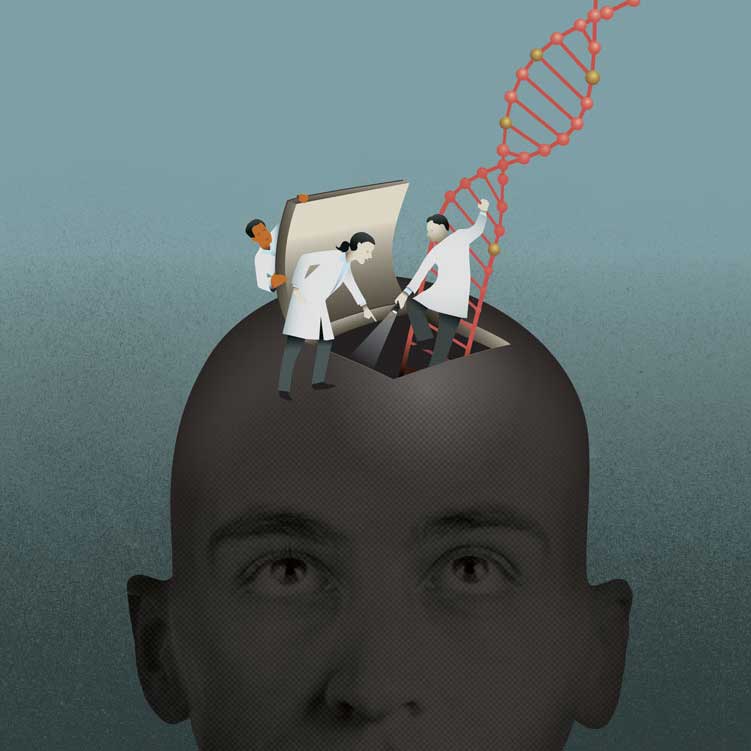Brain Guardians Remove Dying Neurons
Greg Lemke’s lab described the surprising extent to which both dying and dead neurons are cleared away April 2016 in Nature.
Previously, Lemke discovered molecules called TAM receptors, two of which (dubbed Mer and Axl) help immune cells that act as garbage collectors to consume billions of dead cells that are generated in a human body every day.
The team wondered if the receptors did the same job in the brain. When the researchers removed Axl and Mer from cells called microglia (responsible for destroying pathogens in the brain) in mice, they found that the absence resulted in a large pile-up of dead cells, but only in regions where the production of new neurons is observed.
By adolescence, your brain already contains most of the neurons that you’ll have for the rest of your life. But a few regions continue to grow new nerve cells— and require the services of cellular sentinels, specialized immune cells that keep the brain safe by getting rid of dead or dysfunctional cells.
Together with first authors Paqui G. Través and Lawrence Fourgeaud, Lemke’s lab found that many more living nerve cells were able to migrate into the olfactory bulb (smell center) in the absence of the receptors, suggesting that Mer and Axl have another role aside from clearing dead cells: they may also target living, but functionally compromised, cells. This isn’t necessarily a bad thing: the brain produces more neurons than it can use and then prunes back the cells that aren’t needed. However, in an inflamed or diseased brain, the destruction of living cells may backfire.
The team also looked at the receptors in a mouse model of Parkinson’s disease and found that afflicted mice missing Axl and Mer actually lived longer. This may be because in the presence of disease, there are more dysfunctional neurons than normal and Axl and Mer may be prompting the destruction of too many neurons, suggesting potential new targets for treatment.
Featured Stories
 Beyond DNA: Unlocking the Secrets of the EpigenomeA layer of regulatory information on top of DNA is proving to be as important as genes for development, health and sickness.
Beyond DNA: Unlocking the Secrets of the EpigenomeA layer of regulatory information on top of DNA is proving to be as important as genes for development, health and sickness. Tapping our Immune System’s SuperpowerWe all have a superhero—or supervillian—inside our bodies. It’s called our immune system. Every day, a healthy immune system repels a host of adversaries—bacteria, viruses, parasites—you name it!
Tapping our Immune System’s SuperpowerWe all have a superhero—or supervillian—inside our bodies. It’s called our immune system. Every day, a healthy immune system repels a host of adversaries—bacteria, viruses, parasites—you name it! All about town with Pablo HollsteinGrowing up in Quito, Ecuador, Pablo Hollstein was passionate—and precise —about science from an early age.
All about town with Pablo HollsteinGrowing up in Quito, Ecuador, Pablo Hollstein was passionate—and precise —about science from an early age.

















































